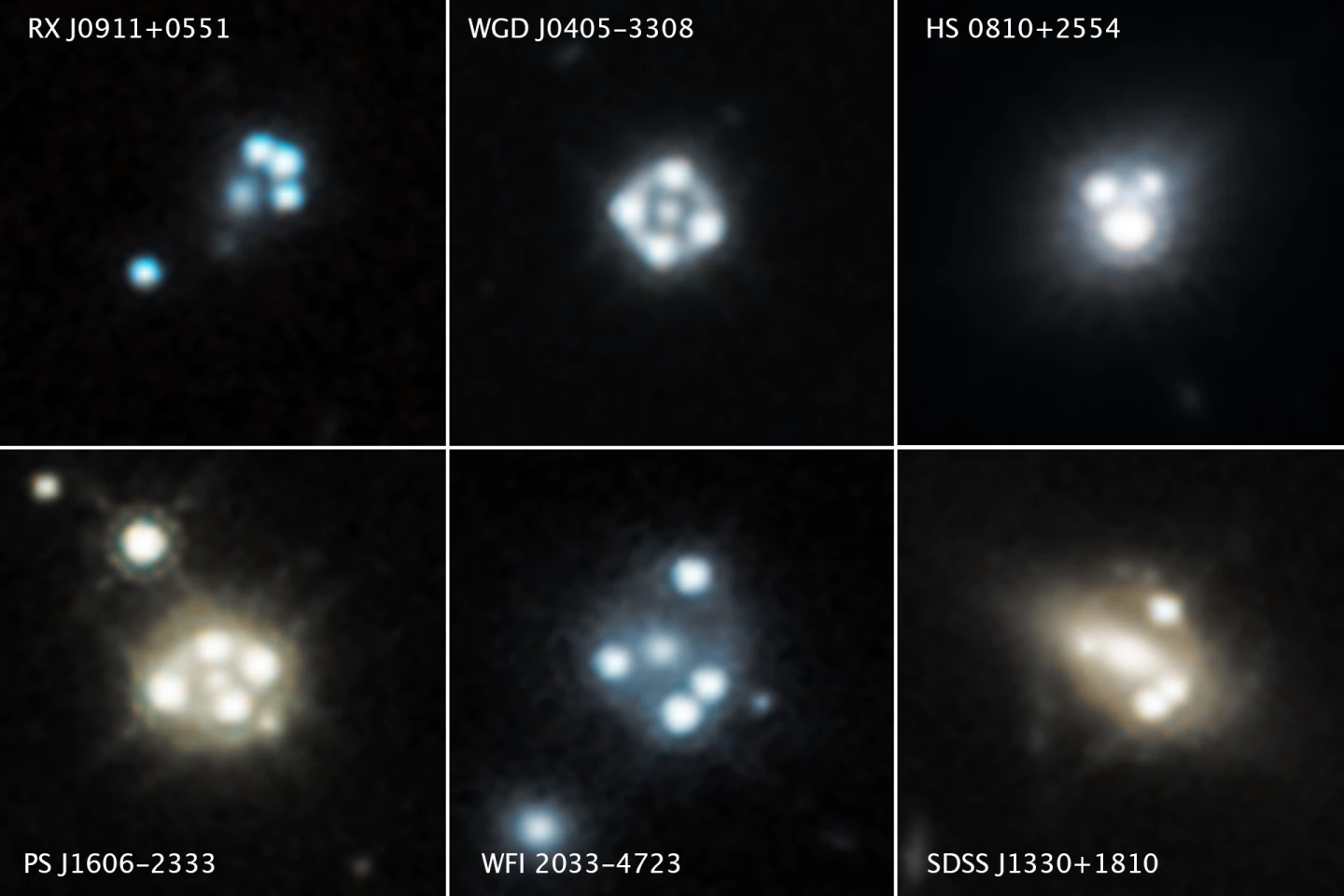Dark matter is a mysterious substance that appears to fill the universe, outweighing regular matter by a ratio of five to one. Clouds of the stuff have been indirectly detected inside galaxies before, but the theories also predict that dark matter should form smaller clumps. Now, Hubble observations have detected evidence of these smaller clumps for the first time, lending weight to the prevailing dark matter hypothesis.
Dark matter has been a key part of our understanding of the universe since the 1930s, when astronomers discovered that clusters of galaxies were moving in a way that suggested they were far heavier than they should be, based on what we could see. Eventually it was calculated that there was far more mass that we couldn’t see, and the idea of dark matter was born.
Still, this stuff has proven tricky to find, on account of it only interacting with normal matter via gravity – that means we can’t see, hear, smell or taste the stuff. We can, however, see its effects on its surroundings, and dark matter is believed to have played a crucial part in the formation of the universe as we know it.
Because of its strong gravitational pull, wherever dark matter settled, regular matter was drawn to it. If enough matter gathers in that spot, it would eventually become so dense that it collapses in on itself, and the resulting heat and pressure forms a star. Get enough of them together and entire galaxies and clusters are born in huge clouds of dark matter.
This version of the story, which is currently the most widely accepted, relies on dark matter being “cold” – that is, its particles move relatively slowly. And while we have plenty of evidence of these huge dark matter clouds holding galaxies together, the theory also suggests that the mysterious matter should form much smaller clumps. Evidence for these has never been found – until now.
Researchers at NASA’s Jet Propulsion Laboratory (JPL) and the University of California, Los Angeles (UCLA) have now detected clumps of dark matter with about as much mass as a passenger plane.
"Dark matter is colder than we knew at smaller scales," says Anna Nierenberg, leader of the Hubble survey. "Astronomers have carried out other observational tests of dark matter theories before, but ours provides the strongest evidence yet for the presence of small clumps of cold dark matter. By combining the latest theoretical predictions, statistical tools and new Hubble observations, we now have a much more robust result than was previously possible."
To do this, they studied eight quasars – bright objects formed around black holes actively absorbing dust – using a technique called gravitational lensing. This phenomenon occurs when the light from distant objects is distorted by the gravity of a large object closer by, duplicating the image of the original object like looking through a piece of broken glass.

In this case, the distant objects were the quasars about 10 billion light-years away, and the closer objects were large galaxies, about 2 billion light-years away. The galaxies were splitting the light so that each quasar appeared four times.
The researchers could then analyze the distortions and compare them to what would be expected if the dark matter’s influence was removed. Doing so, the team was able to calculate the masses of each small lump of dark matter, which appeared to lie somewhere between Earth and the quasars, as well as in and around the galaxies themselves.

"Imagine that each one of these eight galaxies is a giant magnifying glass," says Daniel Gilman, a researcher on the study. "Small dark matter clumps act as small cracks on the magnifying glass, altering the brightness and position of the four quasar images compared to what you would expect to see if the glass were smooth.”
The team says that the study confirms a major prediction of the cold dark matter theory, for the first time. This helps add credence to the idea, and may negate the need for alternate theories describing the stuff. It may also help home in on the properties of dark matter particles, which could narrow down the list of candidates in the ongoing search to detect it directly.
The research was presented at the meeting of the American Astronomical Society this week.
Source: NASA






